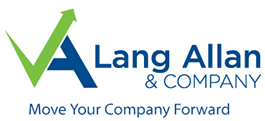In simple terms, if you’re in the business of entering contracts to deliver goods or services to customers, you’re affected by the FASB’s ASC 606, which provides guidance in recognizing revenue. Although ASC 606 applies to a wide range of businesses, it is of particular interest to construction companies.
When it released the new standard, the FASB said it would:
- Result in enhanced disclosures about revenue.
- Provide guidance for transactions that were not previously addressed comprehensively.
- Improve guidance for multiple-element arrangements.
To make sure you are getting off on the right foot with your construction company, ask yourself the following, five questions:
- Can you identify the contract? This means, among other things, looking into the ability to collect.
- Can you identify the performance obligations? This means taking a look not only at the actual promises in the contract but also at the implied promises.
- Have you determined the transaction price? This can get especially complicated in construction, as it may also include variable prices.
- Have you allocated the transaction price? Again, this may have a special meaning in construction, as contractors have to break out stand-alone prices.
- Can you recognize revenue as performance obligations are satisfied? In construction, this means calculating at what point control of the assets passes to the customer.
One of the key aspects of applying ASC 606 is understanding key definitions and practices not only within revenue recognition generally but also within the construction industry in particular. For example:
- You have to identify distinct obligations within the contract. In this context, “distinct” means your customer must be able to use a good or service on its own.
- You have to understand common scenarios. In certain construction projections, inspection walk-throughs may be implied, even if such walk-throughs are not actually noted in the written contract.
- Make sure you’re clear on liabilities versus assets. You may have a contract liability if the customer has paid consideration or if payment is due but you as the contractor have not yet satisfied the performance obligation. On the other hand, if you have transferred goods or services as of the reporting date but the customer has not yet paid, you would recognize either a contract asset or a receivable.
This is just a basic introduction to a complex series of requirements. To make sure you are in compliance from the start of a project, be sure to work with us closely from the beginning and through the job.
